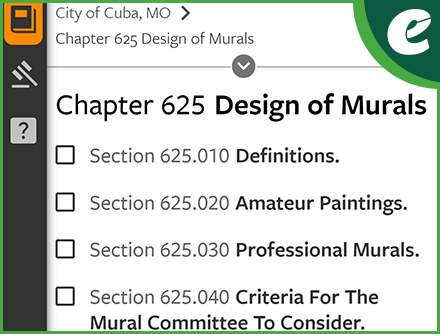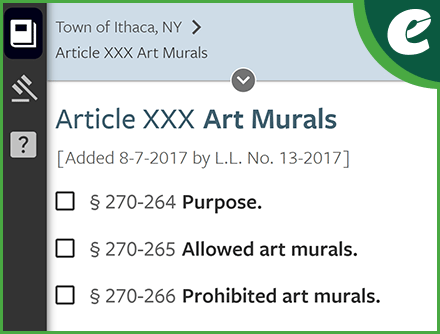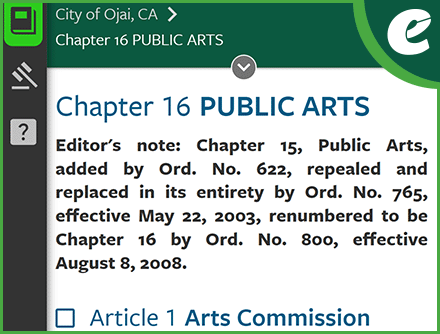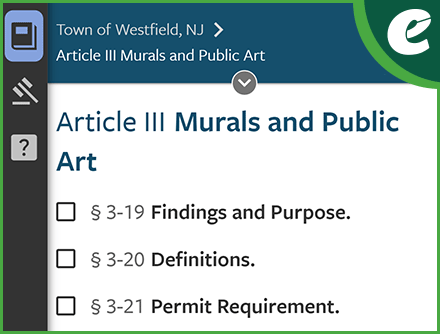Street art and murals have long been a means of artistic expression, cultural representation, and community engagement. Beyond their visual appeal, these public artworks can play a crucial role in enhancing the health and wellbeing of a community. To that point, municipalities are finding ways to support these unique creations while maintaining the character and aesthetics of their communities through street art and murals legislation.
View sample street art and murals legislation >
An ancient tradition
Street art and murals have a rich and varied history, tracing their origins to ancient civilizations. Many historians include the cave paintings in Lascaux, France, and elaborate frescoes in Pompeii as early examples. In modern times, the tradition of public art evolved through the Mexican Muralism movement in the early 20th century, with artists like Diego Rivera, David Alfaro Siqueiros, and José Clemente Orozco using murals to address social and political issues.
The 1970s and 1980s saw the rise of graffiti culture in New York City, where artists like Jean-Michel Basquiat and Keith Haring brought street art into the public eye. Over the decades, street art has evolved from a countercultural expression to a respected art form, celebrated in urban landscapes worldwide. Today, it continues to serve as a powerful medium for community engagement, cultural expression, and social commentary.
Art healthy
Multiple studies show that art can positively affect a person’s sense of wellbeing and social comfort.
Encouraging physical activity.
Art-filled public spaces often become destinations for walking tours, outdoor exercises, and community events. By creating visually appealing settings, street art encourages people to spend more time outdoors, stimulating physical activity, healthier lifestyles, and social interaction.
Enhancing mental resilience.
Street art and murals provide visual stimulation that can uplift the spirits of residents and visitors alike. Vibrant colors, creative designs, and thoughtful messages can serve as daily reminders of beauty and positivity. Studies suggest that exposure to art can reduce stress and anxiety, improve mood, and even decrease the prevalence of depression.
Fostering social cohesion.
Public art projects often involve community participation, bringing together people from diverse backgrounds. This collective effort can strengthen social bonds, promote inclusivity, and enhance the sense of belonging among residents. Murals that reflect local culture and history can also instill pride and identity, working to further unite and heighten a sense of community.
Revitalizing public spaces.
Neglected or rundown areas can be transformed into vibrant, attractive spaces through public art. This revitalization can lead to increased foot traffic and improved safety to promote economic benefits for local businesses.
Taking the initiative
Municipalities have numerous strategies at their disposal to foster and sustain art within their communities.
Updating municipal ordinances.
Recognizing the various benefits of street art, many local governments are updating their ordinances to support and regulate public art projects. These updated ordinances often include provisions for the creation, maintenance, and preservation of murals. For example, some cities have established mural approval processes that involve community input and professional oversight to ensure high-quality and culturally relevant artworks.
Funding and grants.
Where budgets allow, local governments are also providing financial support for public art through grants and funding programs. These initiatives help artists to cover the costs of materials, labor, and other expenses associated with creating large-scale artworks. By investing in public art, municipalities are investing in the welfare of their communities.
Collaborations with artists and organizations.
Cooperation between local governments, artists, and community organizations is becoming increasingly common. Partnerships enable the pooling of resources, expertise, and community insights to create impactful projects. For instance, cities like Philadelphia and Los Angeles have successful mural programs that involve collaborations between municipal agencies and nonprofit organizations.
Preservation and maintenance efforts.
Ensuring the longevity of public art is crucial for maintaining its positive impact on the community’s health. Local governments are implementing preservation and maintenance programs to protect murals from vandalism, weather damage, and neglect. Regular maintenance ensures that these artworks continue to enrich the community for years to come.
Embracing the power of public art
Street art and murals are more than just creative expressions; they are powerful tools for enhancing the livability and sustainability of a community. Through updated ordinances, funding, collaborations, and maintenance efforts, local governments are recognizing and supporting the significant role that public art plays in fostering vibrant, healthy communities. As more cities embrace this movement, the positive impacts of street art will continue to flourish, elevating the lives of residents and visitors alike.
Useful examples of street art and murals legislation from the eCode360® Library
If your community is interested in legislating or updating ordinances to support street art and murals, here are some useful examples that can be found in our eCode360 Library:
Updating your municipal code is vitally important
Submit your code updates as soon as possible and ensure constituents and local government officials are always referencing and working with the most up-to-date resources. Make it part of your Board meeting close-out process to send your adopted legislative changes to General Code when everything from that meeting is already right at hand.
For tips that will allow us to process your code updates most efficiently, click here.
Questions about updating your code?
Our Client Care team is available to explain the options and benefits of scheduled code updates or any other code-related questions you might have.
Sources:
- Graffiti Art
- The intersection of art and health: How art can help promote well-being
- The Art of Destressing: How Creativity Creates Less Stress
- Role of Arts and Culture in Fostering Social Cohesion and Community Well-Being
- The role of the arts in community revitalization
- The Benefits of Street Art in Communities 2023
- The Legalities of Street Art: Graffiti Laws and Regulations
- Why Public Art Is Good for Cities
- America’s Mural Magic: How Street Art Can Transform Communities And Help Businesses
- Maintaining And Preserving Your Street Mural Over Time
- Public Art Maintenance Best Practices
- Americans for the Arts: Public Art Network
- The Mural Arts Program in Philadelphia
- City of Los Angeles Department of Cultural Affairs
- National Endowment for the Arts: Public Art Resources
- The Mental Health Benefits of Art
- Funding Sources for Public Art
- Why Art Matters: Street Murals Bolster Communities and Re-Imagine Transportation
- eCode360® Library of municipal codes






